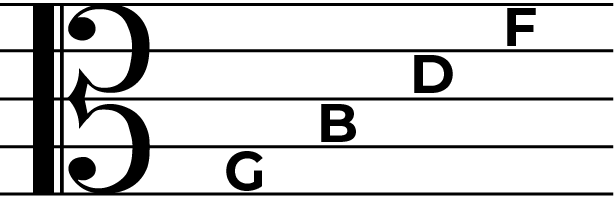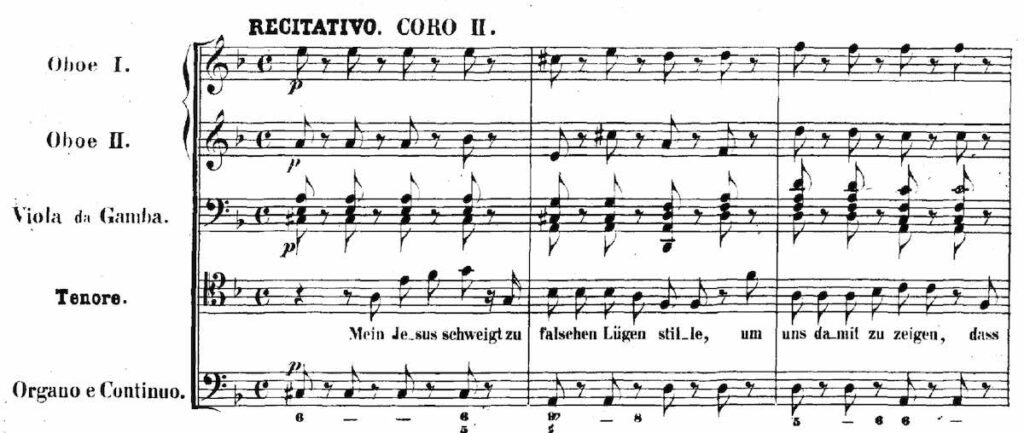The alto clef is a slightly less common clef. This clef is most often seen in viola music.
If you would like to learn how to read alto clef notes then read this blog post carefully as we will teach you how to read the alto clef note names and more.
A clef is a symbol written at the beginning of staff lines. This symbol helps to determine a pitch for each line and space and therefore helps the performer to know what notes to play. The staff represents the music a composer would like the performer to play and by placing a clef at the start of the staff, each line and space will have an assigned pitch.
What is the Alto clef?
The alto clef is a type of C clef. This literally means that in the dip in the middle of the clef is the note middle C. This C clef can then be placed on any line of the staff. Wherever you place the C clef on the stave the line directly in the middle will be middle C.
The Alto clef is a C clef on a very specific line of the staff. That line being the third line.

The third line of the staff is middle C. This clef allows instruments to play notes above and below middle C with ease!
As with other clefs the alto clef will have five lines and four spaces.
What Are The 7 Musical Notes on the Alto Clef Staff?
The notes of the alto staff are, from the bottom line to the top line are as follows:
F, G, A, B, C, D, E, F, G
Notice how once we get to the E the musical alphabet repeats again.

Learn to Read Alto Clef
Lines of the Staff
As you can see above, every note is either on a line or in a space. If you separate these out it is much easier to remember!
Below you can see the line notes:

Spaces of the staff
Below you can see the space notes:

There are some very easy way to help you remember these lines and spaces note names and these are different mnemonic devices.
For the line notes we can use the mnemonic device – Fat Alley cats Eat Garbage. This rhyme goes from bottom to top on the five lines and the lines correspond with the mnemonic above. The bottom line will be F ‘fat’, the second line will be A ‘alley’, the third line will be C ‘cats’, the fourth line will be E ‘eat’ and the top line will be G ‘garbage’.

Spaces of the staff
For the space notes we can remember Good Brakes Don’t Fail. The rhyme goes from bottom to top just as we saw with the line notes. The bottom space is Good ‘G’, the second space is Brakes ‘B’, the third space is Don’t ‘D’ and the fourth space is Fail ‘F’.

By using these rhymes you will be able to learn how to quickly read alto clef notes.
Line Note Reading Practice
Want to do some alto clef line note reading practice? Take a look at the short piece of sheet music below and see if you can read the alto clef notation.

The answers are:
F, A, F, A, E, G, C, A, C, E, A
Space Note Reading Practice
Want to do some alto clef space note reading practice? Take a look at the short piece below and see if you can read the alto clef note names.

The answers are:
G, B, G, B, F, D, D, F, A, F, B
How To Draw An Alto Clef Properly
The alto clef is an interesting one to draw. It is made up of two reverse C’s connected by a little V. There are then two vertical lines to the left hand side.
The key thing with the alto clef is to make sure you have the third line (middle line) going through the middle of the V.

Grab some staff paper and give it a go!
Which instruments use the alto clef?
The alto clef is far less common than the treble and bass clefs (G clef and F clef). The treble and bass clefs are by far the most common clefs. However, the alto clef is still used!
The most common instrument that uses the alto clef is the viola, so much so the alto clef is sometimes referred to as the viola clef.
The viola uses the alto clef because it is lower than the violin but not quite as low as other instruments such as the cello and double bass which use the bass clef.

You will also see the alto clef used for the alto trombone.
As with other clefs it is also possible to use ledger lines to extend the notes available.
Why does the alto clef exist?
The alto clef was historically used to reduce the need for ledger lines in vocal music, specifically the alto voice. Hence the name of the clef. This is because the alto voice sits in a very awkward position of singing some notes above middle C but also some below, exactly in the middle of the treble clef and the bass clef. By using the alto clef the notes written are exactly in the middle.

Want to Learn More About Music?
If you want to continue learning more about musical notation and the different clefs in music theory, then make sure to check out our complete guide to clefs.
The best place to look next is to learn about the treble clef and bass clef and how to read music notation in these different clefs.
Similar to the alto clef we also have the tenor clef. Both of these clefs are examples of c clefs. The only difference between the alto and tenor clefs is that the middle C shifts to a different line on the staff.

